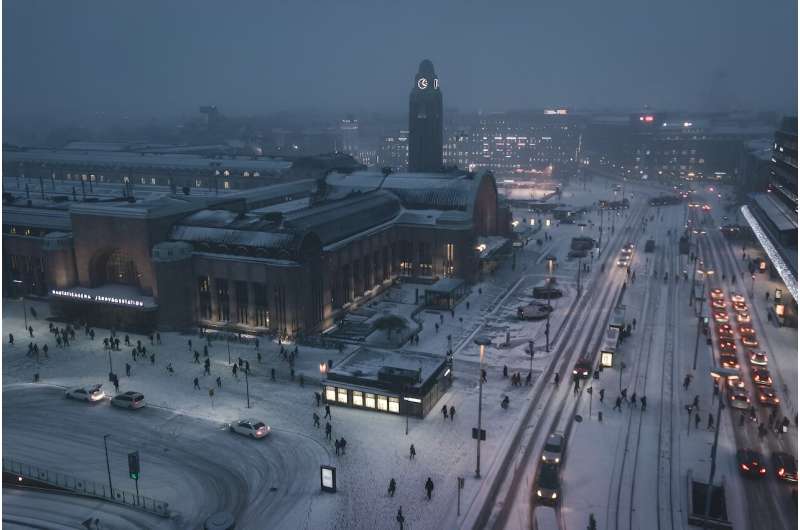This article has been reviewed according to Science X's editorial process and policies. Editors have highlighted the following attributes while ensuring the content's credibility:
fact-checked
trusted source
proofread
Study finds connection between light levels and mental health: Climate change could also have impact

In Finland, there is a clear increase in the number of sick days taken due to depression, anxiety and sleep disorders in October and November, whereas the number of absences is lower than expected between June and September. In late autumn, the number of sick days taken is almost twice as high as in the summer and about a quarter higher than in early autumn. On the other hand, manic episodes related to bipolar disorder occur more frequently than expected during the spring and summer, when there are more daylight hours, and less frequently than expected during darker times of year.
These are the results of a study published in Epidemiology and Psychiatric Sciences. It was conducted as a part of the Climate Change and Health research program at the University of Eastern Finland. The aim of the study was to investigate the connection between changing light levels and mental health. It is expected that due to climate change, winters in Finland will become darker while summers will become brighter.
During the study, Kela's sick leave register was used to analyze the seasonal timing of a total of 636,543 sick leaves that were due to mental health reasons over a period of 12 years. The analyses examined whether the expected number of absences was above or below the expected number of sick leaves.
"Previous studies have found that some people experience so-called winter depression (seasonal affective disorder) during the dark season. In addition to the typical symptoms of depression, kaamos depression involves an increased appetite and weight gain along with excess sleepiness, which means sleeping for longer and feeling tired during the day. The symptoms of winter depression can often be alleviated through bright light therapy," says Timo Partonen, a Research Professor at the Finnish Institute for Health and Welfare.
Seasonal variation can increase workloads in the workplace and in health services particularly in the autumn, when the most common types of sick leaves—absences due to depression, anxiety and sleep disorders—are starting to occur often.
"It's also worth considering if there are other explanations for the phenomenon apart from a dark season. For example, is there an exceptionally high amount of psychosocial stress in the workplace during autumn, which then leads to an increasing number of sick leaves," says Professor of Psychology Marianna Virtanen from the University of Eastern Finland.
If climate change causes summers in Finland to become brighter and winters to become darker, the study suggests that depression, anxiety and sleep disorders could increase during the winter because of those changes. However, with the exception of sleep disorders, they could also become less prevalent during the summer. In the case of bipolar disorder, darker winters could alleviate the symptoms of mania, while brighter summers could exacerbate them.
More information: M. Virtanen et al, Seasonal patterns of sickness absence due to diagnosed mental disorders: a nationwide 12-year register linkage study, Epidemiology and Psychiatric Sciences (2023). DOI: 10.1017/S2045796023000768




















